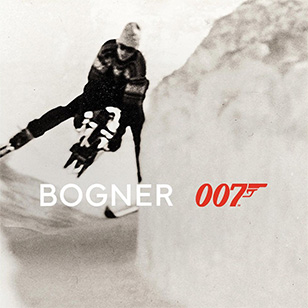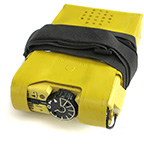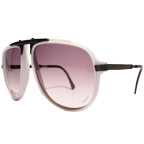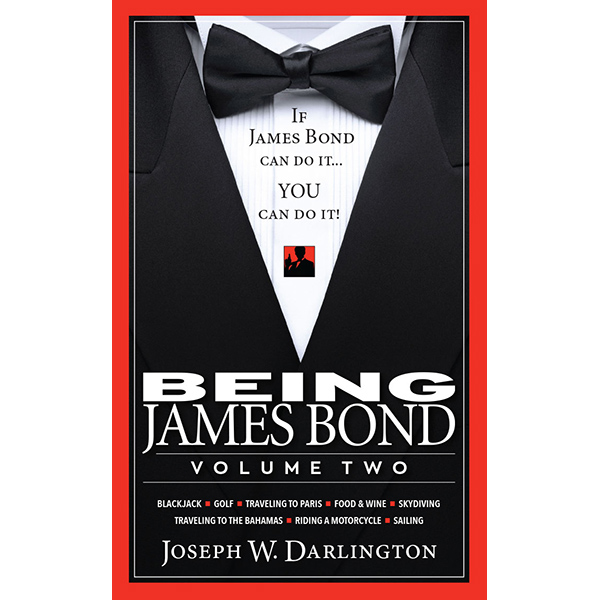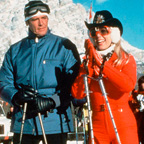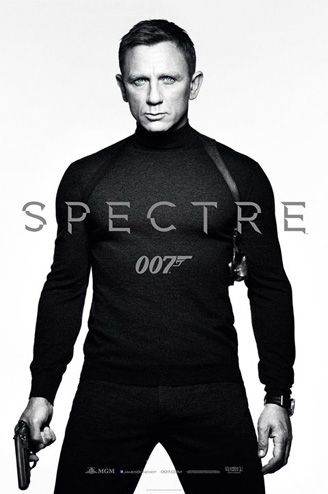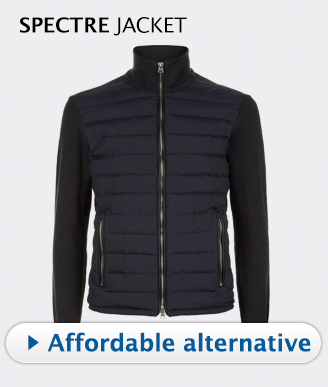Skiing - Part 3
In Part I and Part II of 'Skiing', we explored the basic expectations of your first experience with skiing. We discussed ways to prepare for your first day on the slopes, including how to get into shape, and what clothing you should wear to keep you warm and dry. We talked about what you can expect when you arrive at the ski resort, weighed the options for choosing your equipment, and we touched on the fundamentals of skiing. Now, it's time to strap on your skis and hit the slopes.
Skiing basics
Comic-genius Stephen Wright used to joke, "You know that feeling when you're leaning back in your chair, and you lean too far back, and you almost fall over backwards, but then you catch yourself at the last second? I feel like that all the time..." Once you are actually standing in the snow, with the skis attached to your feet, you'll be feeling like that all the time. When you first realize that you can't hold your balance the way you normally could, this is the moment where terror strikes, and everything you were taught about skiing tends to go out the window. But take heart, and remember these tips about navigating on skis.
Getting Around on Skis
How are you supposed to get around with these things on your feet? Walking forward is just one foot in front of the other, you'll just be taking bigger steps. If you opted for ski poles, they will help you to keep steady.
But, what happens when you're trying to get up a small slope, which you're probably going to do very early on? Well, you can try taking "Herring Bone" steps. This is when you point your skis out at an angle, separating the front of your skis, and forming like a "V-shape," while pressing the edges down into the snow a little bit to get some grip, and trying not to step on your own skis. For sharper inclines, you might have to do a side step. Turn to the side, perpendicular to the slope; move your first ski up, get a good grip, and then bring your other ski up next to it.
Coming to a Stop
Usually, the first question on every beginner's mind is "How do you stop?" For the absolute beginners, the best way to stop is usually to simply fall down. For example, if you start down the slope for the first time, and you start picking up speed, don't panic and lock up. Just bend your knees, and drop gently to the ground.
When you are finally able to push off and glide along the snow for the first time, you will quickly have to learn to stop. The basic way for all beginners is usually a "snowplow," also called a "wedge", and sometimes younger kids call that a "pizza." What's happening here is, you're going to bring the tips of your skis together in a sort of upside down-V, opposite of what you did for the Herring Bone. This is where you want to keep your legs strong, because you don't want your skis to cross and overlap each other. You're pushing against the snow to slow down, so you're also going to apply pressure to the outside edge of your skis, enhancing that snowplow effect. You can apply this method more gently if you just want to slow down a little bit. Now, while you're learning to do this basic snowplow, it's also interesting to know that this is one of the simplest ways to turn.
Turning
Let's say you're going down a gentle slope, and you decide you're going to snowplow to slow yourself down. While you're snowplowing, put a little extra lean on your left leg, applying pressure down onto the inner-edge of the ski. You'll find yourself gliding a little more towards the right. Naturally, if you apply a little more to your right ski, you'll find yourself gliding towards the left. Suddenly, you realize that you've just learned how to make a turn. It's literally as simple as that. Of course, this is only the beginning.
By watching the more experienced skiers going left and right down a steep slope, you'll soon realize that the snowplow is only going to get you so far for so long. Keep this in mind, as you watch those advanced skiers come down the slope; put simply, they are simply using a more exaggerated method of the principle we just talked about.
For example, they're coming down harder and faster. So whereas we just applied a little bit of pressure to one ski to slow down and turn, they're going to have to apply a lot more pressure. To make that left turn, they're going to have to throw all their weight down onto the right ski; in fact, they will have to lift up that left ski, and throw both skis down so they are traveling in the same direction. This is why skiier must keep thier legs bent and stay flexible, because they need to be ready to give a little bounce when they want to change course. This is also when you will be happy you did some strength training in your legs. This action of shifting your balance and throwing your weight on different skis, is the way you slow your body down, and change course. Essentially, that's what skiing is. It's the art of slowing yourself and changing direction, to easily navigate the slope.
This is, of course, completely counterintuitive to a beginner's first instinct to throw down the skis, pointing towards the bottom of the slope, and just go forward. You're going to be in a constant state of motion where you're changing directions and slowing yourself down periodically. It's very rare that you see a skier just pointing straight down the mountain. Even when you see an advanced skier doing that, he's never going faster than he can control. He knows that he needs to slow himself down. He might go forward for a little while, then apply pressure to his skis to change direction and slow himself back down.
The name of the game is staying in control.
This is why we start out on hills that are not very steep at all. You only want to go as fast as your stopping ability will allow, as you are learning to control your skis and stop yourself. As you get better at stopping, as you get better at changing direction, you can start to tackle steeper hills.
As I mentioned earlier, there are only two speeds for a beginner; too fast and too slow. But, as you start to get better, and as you learn to control yourself on the skis, you start to move more toward the center. You will find that middle ground where skiing becomes exciting and fun.
That's the science of skiing as I have come to understand it. Now, how about a few more practical things before you head off to the lift to catch up with your friends and show them what you've learned?
Getting Up After a Fall
The first time you try to stand up in skis after falling down, you'll feel like a turtle on its back. So, what's the best way to do this? Anytime you need to stop on the slope, either due to a fall, or just to adjust our equipment, always place your skis perpendicular to the slope. This is the one position where they won't be facing up or downhill, so they won't slide. So step one is to try and get yourself perpendicular with the slope.
The next thing is to try to get the skis down hill. Try to rotate your body so that your skis are actually down hill, and your head is pointing towards the top of the slope. This helps because, as you're lying on the slope, the gravity is at your feet, and your body is already shifted towards an upright position. In other words, if you're laying down on a very sharp incline, you don't have to push yourself up as far for you to be standing vertical. So, always try to position yourself so that your skis are downhill.
If your skis are more or less still parallel to each other, you're in good shape. Try to position your skis perpendicular to the slope. Now, you want to pull your inside leg up a little bit higher. When I say "inside leg," I mean the leg that's closest to the ground. For example, you're laying down on your right side, and your head is pointed toward the top of the slope. Looking down, your skis are pointed toward the right side of the slope, and are now perpendicular to the slope. You're going to pull your right leg up a little bit, and now if you push up with your arms, you should be able to get yourself on top of the two skis to stand up. You can use your ski poles to help you by pushing yourself up on the poles to get yourself upward.
Now, if you've really got yourself tangled up, you can try another way. Roll yourself onto your stomach. When you get to the point where your thighs and knees are on the ground, bend your knees, so your skis will go up in the air and straighten themselves out. If you can turn your ankles in the same direction, keeping your skis parallel, then roll to your side and push yourself up normally. If you're having trouble getting to your side, then twist your feet so that your heels are coming together and your toes are pointed out, you can now put your legs down so that your skis are back on the ground, forming a V-shape. Then, you'll come back up on your knees and try to push yourself up. You should be able to push yourself off, put your rear end up in the air, and then stand up. It's not very graceful to look at, but neither is sitting in the snow for too long.
Recovering your Skis
What happens if you fall and lose one of your skis? What's the trick to getting the ski back on? The rule of thumb is that it's always easier to step uphill. If you try to step downhill into your ski, it's going to be really easy to lose your balance. Place the ski next to you so that it's perpendicular to the slope, then turn around or move your ski so that the ski is uphill, and then step up into the ski.
Now, with that out of the way, I think you're ready to hit the lifts, and join the rest of your crew who are tearing up the slopes.
Ski lifts
The first time you get on a ski lift might be a little intimidating, but you'll be surprised how easy it really is, and how nice the ride to the top can be. When the time comes, be alert and keep moving forward in line. When it's your time to board the lift, you will be directed where to stand. You'll know exactly when it's time to sit down, as the chair will simply come up behind you and scoop you up. From there it's just a nice, enjoyable ride to the top.
Getting off is just as easy. You'll always know when it's time to step off. As you get to the top, and it's almost time to step off, you'll scoot up to the edge of the chair, and when your skis meet the snow, you'll know it's time to slip off.
Navigating the trails
Now, when you're actually on your own and hitting the slopes, make sure that you bring a trail map with you. Every ski trail has a trail map so that you'll know which ski trail is the easiest, which are intermediate, and which trails are the most difficult. You'll always be able to identify the trails according to their markings. The trails are always clearly marked according to their difficulty levels, and the markings are usually universal. The easier trails are marked with a green circle. The intermediate trails are marked with a blue square. Of course, the more difficult or expert trails are marked by a black diamond, or for the really difficult trails, two black diamonds, or a "double black diamond." Naturally, you want to start off on the greens. Stick to those until you're ready to tackle the blues, and then, when you're ready to ace the blacks, that's when you're going to feel like James Bond trying to outrun the villains.
Knowing when to hit the lodge
Later on, after you've been carving up the snow for a few hours, if you find yourself falling down more often, and you're getting a little bit frustrated, take heart; your skiing ability isn't slipping away from you. Your body is just telling you that you're getting tired, which basically means its time to hit the lodge and warm up with a cold beer, a hot chocolate, or a nice Irish coffee.
Once you discover that après ski after a long day of carving up the slopes, you can officially call yourself a skier.
Ski destinations
As we said earlier, after your first day, you're either going to love skiing, or you're going to hate it. My guess is that you're going to love it. Maybe you'll get so good that you're going to venture off to some more challenging ski locations. If you're on the East Coast, the best skiing is in New England, in states like Vermont, New Hampshire, and Maine. Of course, for the best skiing in the United States, the real skiing is out in Colorado.
Once you've mastered the U.S. slopes, you can really follow in the footsteps of 007 and head to Europe; specifically the Alps, the Mecca of skiing. Countries like Austria, France, Italy, and of course, Switzerland are the major Alpine countries, and Bond has skied most of them. What this all means is that, if you find yourself being seduced by skiing, if you learn to love it, you'll go often, and you'll get better. Once that happens, the possibilities are endless. The world is your oyster. One day, you might even find yourself carving up the Swiss Alps, just like James Bond.
Safety and etiquette
As a beginner, the other skiers are going to be very forgiving of your mistakes, but it's quite another thing to be reckless and stupid. Here are some things to keep in mind as you set out onto the slopes:
Keep Control
Always keep control and able to stop when you need to, especially when avoiding objects or other people. If you find yourself in a situation where you're going too fast, and can't get control, just bend your knees and go down to the ground. That hurts a lot less than crashing into another skier.
Keep Your Eyes Forward
People ahead of you have the right of way. It's your responsibility to avoid them, just as the people behind you are responsible to avoid you. Keep your eyes forward and stay sharp.
Don't Stand Around the Slope
Try not to stop and stand in the middle of the trail so that other skiers have to try to avoid you. If you need to pause to catch your breath or get your bearings, move to the outer edges of the slope. And always keep visible.
Look Before Merging
Whenever you're stepping onto a trail midway, or your trail merges with another trail, be sure look uphill and yield to other skiers.
Hold Onto Your Equipment
Always use devices to prevent runaway equipment. Keep your hands through the straps of your poles so you don't lose them, and if you find yourself losing your skis a little too frequently, your bindings might need an adjustment. So head back in the rental office and get them adjusted.
Read the Signs
Pay attention to the posted signs and warnings. Watch for signs indicating the trail's difficulty levels, and avoid the trails that have been closed off.
Be Aware at the Ski Lift
Stay sharp when you're getting on and getting off the ski lift. Getting distracted when it's your turn to board the lift can lead to some embarrassing, and possibly dangerous moments. Use your head, and follow what the other skiers are doing.
Snowboarding
In my mind, if Ian Fleming's James Bond was a skier, then I am a skier; but having said that, it would be remiss if I didn't talk about snowboarding. After all, James Bond snowboards (technically,) in A View to a Kill. In fact, you could even make the argument that James Bond did a lot to push snowboarding into the mainstream. At the time A View to a Kill was released in the mid-80s, the idea of somebody surfing on snow was so strange that the filmmakers even decided to highlight the absurdity by adding that awful surfing music that makes most Bond fans cringe. However, if James Bond can lose his skis and easily jump onto a snowboard, then it's something that Being James Bond should touch on.
Much of what we've covered so far about skiing also applies to snowboarding; including conditioning, clothing, and navigating the slopes. Snowboarding has become widely acceptable in most ski areas, and you should also be able to find yourself some snowboarding classes.
So, what are the differences between skiing and snowboarding?
I've heard different schools of thought when it comes to the similarities between skiing and snowboarding, but one thing is for sure; just because you have good skiing experience, doesn't mean you can switch easily over to a snowboard. (And, I can vouch for that. The first time I tried to snowboard, it was an absolute fiasco.) On the other hand, if you do have some experience carving up the snow, you at least know a few general principles, but don't expect your body to communicate with the snowboard in the same way it communicates with skis.
If you are an absolutely beginner about to set out on the slopes for the first time, it might good to decide up front if you want to be a skier or a snowboarder. Here are a few of the differences that you should consider before making the choice:
Stopping a snowboard is a little bit awkward. Snowboarders are always exerting energy to stay on the edge of their board if they way to keep from sliding. Either that or they have to sit down. Plus, you don't have the poles to keep you upright and stationary. Another difference is that snowboarding tends to be easier on the knees than skiing. Knee injuries are a lot less common on snowboards than on skis. On the other hand, snowboarding can be pretty rough on your wrists, so you should probably wear some protective wrist guards. Flat surfaces can be particularly frustrating for snowboarders, because you don't have your poles to move you forward. The only thing you can do to get around is to take one foot out of your snowboard and just walk.
Another difference between snowboarding and skiing is that snowboarding works better in deeper, softer snow, whereas skis are much better handling bumps and ice. Also, they say that getting up on a snowboard is easier than getting up and getting yourself together on skis.
Now, if you're learning to ski just to get your adrenaline going, it might surprise you that skiers get a lot more velocity than snowboarders, so factor that in when you're making your decision.
I hope I didn't show too much bias in this explanation, but as I love to remind my snowboarding friends, if Fleming's Bond skied, I ski! Of course, there's plenty of room on the slope for all of us, so whatever you decide to do is fine. Both activities will give you a great feeling at the end of the day, as you're relaxing in the lodge.
With that out of the way, we're almost at the end of this article on skiing.
To learn more about skiing, you can check out The Essential Guide to Skiing: 201 Things Every Skier Must Know by Ron LaMaster, and Essentials of Skiing: The Fastest Way to Master the Slopes by Harold Harp, which also came with an instructional DVD. There were even a few great websites offering some good tips and techniques for learning to ski. Check out The Adventurerr (theadventurerr.com/winter-sports/skiing/), Ski Great (www.skigreat.com) and GETskiing (www.getskiing.net), all of which had some great videos or animations to help explain good skiing techniques.
And of course, there is no better way to learn than to hit the slopes and take a skiing class with a qualified instructor. Even if you already have some experience, a few lessons should really bring out your personal best, and take your skiing ability to the next level.
Now before we finish out this article, we're going to have to make one stop. As promised, we're going to visit Piz Gloria on Mount Schilthorn in Murren, Switzerland.

PIZ GLORIA
When it comes to skiing, Switzerland is unmatched, and when it comes to Bond locations, there is one that is second to none. The grandfather of all Bond ski chases started at Piz Gloria, and endured down the side of Mount Schilthorn, in Murren, Switzerland.
Getting to Piz Gloria can be half the adventure. A train from the town of Interlaken will take you to nearby Lauterbrunnen, where a few scenes from On Her Majesty's Secret Service were shot. From there you take funicular right up the side of the mountain. At your next stop, another rail will take you into the town of Murren, and from there it's two gondola lifts up into the mountains, and to the outstanding Bond location Piz Gloria.
Make sure you're dressed appropriately. It was a mild spring afternoon on the day I went, but by the time I stepped off the gondola onto Piz Gloria at that altitude, it felt like a blustery winter afternoon, just as it must have felt when they filmed On Her Majesty's Secret Service.
Once inside Piz Gloria, it seemed that little had changed since James Bond was here. Walking up the stairway along its familiar golden balustrade to the revolving restaurant will make even the mildest fan of On Her Majesty's Secret Service feel as if they were about to walk into a room filled with exotic women from around the world and only moments away from confronting his most dangerous adversary. Be sure and order the James Bond Breakfast Special, complete with champagne and scrambled eggs.
Piz Gloria still pulsates with the feeling of stepping into a James Bond film. Atop Mount Schilthorn in the village of Murren, Piz Gloria offers views that extend along the Bernese Alps to Mount Blanc on a clear day, and walking along the terrace, you can still envision the curling rink and the helipad where Bond let the aerial assault on Blofeld's fortress.
As much as we enjoy visiting well-known Bond locations, Piz Gloria certainly enjoys being one. Underneath the terrace is the Tourist-O-Rama. Press the '007' button in the center of the large circular room, and with a low mechanical hum, the shades will slowly lower on all the windows, and visitors can relive Bond's adventures in Switzerland through a panoramic slide presentation about the preparation and filming of On Her Majesty's Secret Service, including a video montage of the highlights of the film.
Upstairs is the gift shop where there are airbrush murals of Bond and Tracy; I hope you like a little nostalgia. You'll find a few souvenirs here from you trip with a classic 007 insignia.
Once you've had a hearty meal in the restaurant and just before you're about to throw down your skis and ski down Mount Schilthorn, don't forget to stop off at the James Bond bar for a cocktail. Be sure to order a malt whiskey with branch water, of course.
For more information on Piz Gloria and Mount Schilthorn, look them up on the web at www.schilthorn.ch, or e-mail them at info.schilthorn.ch.
And with that, that concludes this article on skiing.
Good luck, and I'll "see ya back at the lodge!"
© 2010 Joseph Darlington - beingjamesbond.com





